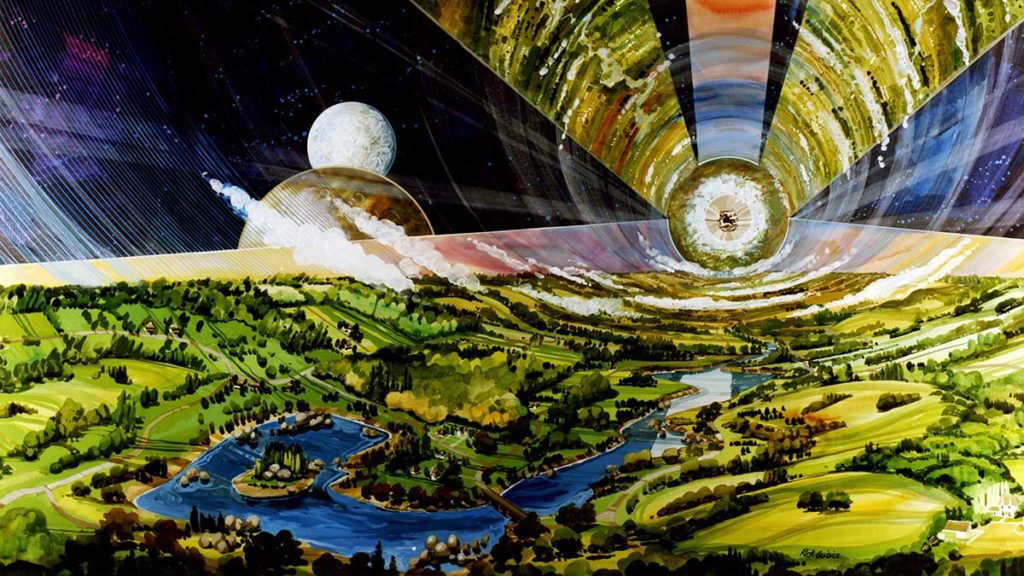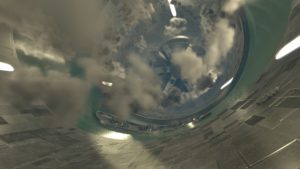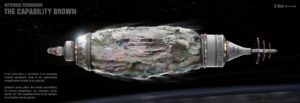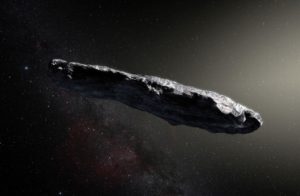
What are O’Neill Cylinders?
O’Neill cylinder space ships or space stations are a concept in science fiction and space engineering that was first proposed by the physicist and space activist Gerard K. O’Neill in his 1976 book, The High Frontier: Human Colonies in Space. The concept involves creating cylindrical, self-sustaining habitats with centrifugal gravity, atmosphere, and large populations in space that could be used as homes for humans and as centers for scientific research, or even commercial activities.
Why are they popular space colony form factors?
Despite these challenges, the concept of these ships remains an inspiring idea in the field of space exploration and engineering, as well science fiction. They are often called “generation ships” because, if successful, generations of humans could live on them long enough to travel to other star systems.
Despite the challenges and technological hurdles that must be overcome to ever bring such a vessel to life, the idea of O’Neill cylinder design ships remains an exciting and inspiring concept for the future of human space exploration.
6 Famous O’Neill Cylinders
Rama from Rendezvous with Rama

This is the one that started it all and inspired this article! In the book, a massive, mysterious interstellar ship entered our solar system to much excitement. Arthur C. Clarke outdid himself with the sense of exploration and wonder as a crew of astronauts study it from the inside out. Do yourself a favor and read the book! Or read one of these 7 novels like Rendezvous with Rama if you’ve read it already…
Get the book from Amazon and get excited for the upcoming movie from Denis Villeneuve!
Medina Station (Nauvoo) from The Expanse

Medina Station was originally called the Nauvoo by the Church of Latter Day Saints (Mormons) when it was constructed at Tycho Station. They intended to escape the Sol system and move their culture to Tau Ceti, like a modern day Mormon Trail to Salt Lake City.
Cooper Station from Interstellar (Movie)

This is one of my favorite O’Neill cylinder depictions, and one of the most beautiful. Most of Cooper Station’s land is used to grow crops, which, if you’ve seen the movie, you know is a big deal. I don’t want to spoil anything, but you really should watch this brief clip just to see it.
Actually, just go stream the whole movie!
Terraria ships from the novel 2312 by Kim Stanley Robinson

Earth is no longer humanity’s only home; new habitats have been created throughout the solar system on moons, planets, and in between. These habitats are oblong asteroids with hollowed-out cylindrical centers. Once they’re set spinning on the long axis, artificial gravity and life support systems create numerous ecosystems for humans and animals alike. Which is good, because Earth is basically toast in this climate change fiction epic.
Get the book from Amazonor read a review from The Guardian
Babylon 5 (TV Show)

The Babylon 5 space station is an O’Neill cylinder 5 miles long and 1 mile in diameter. It contains living areas which accommodate various alien species, providing differing atmospheres and gravities. Human visitors to the alien sectors are shown using breathing equipment and other measures to tolerate the conditions.
Read more at Wikipedia
ʻOumuamua (asteroid)

Okay, so maybe this isn’t really an O’Neill cylinder, but it should would be fun if it was! ʻOumuamua is the first interstellar object detected passing through the Solar System. Most astronomers think it is a natural object, but its exact nature is up for debate given how little time it spent in our solar system. I’ll hold out hope, along with a tiny group of astronomers, and dream it was an alien ship passing through, just like Rama!
